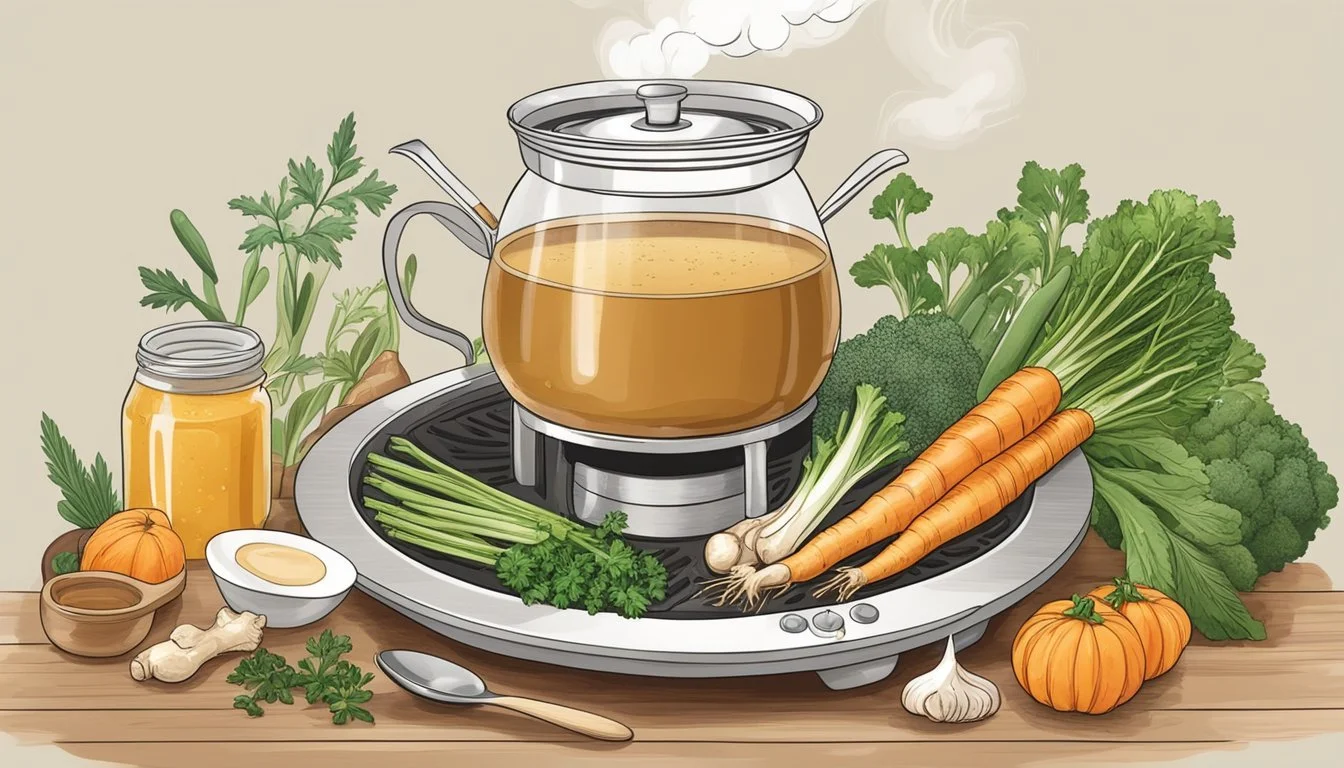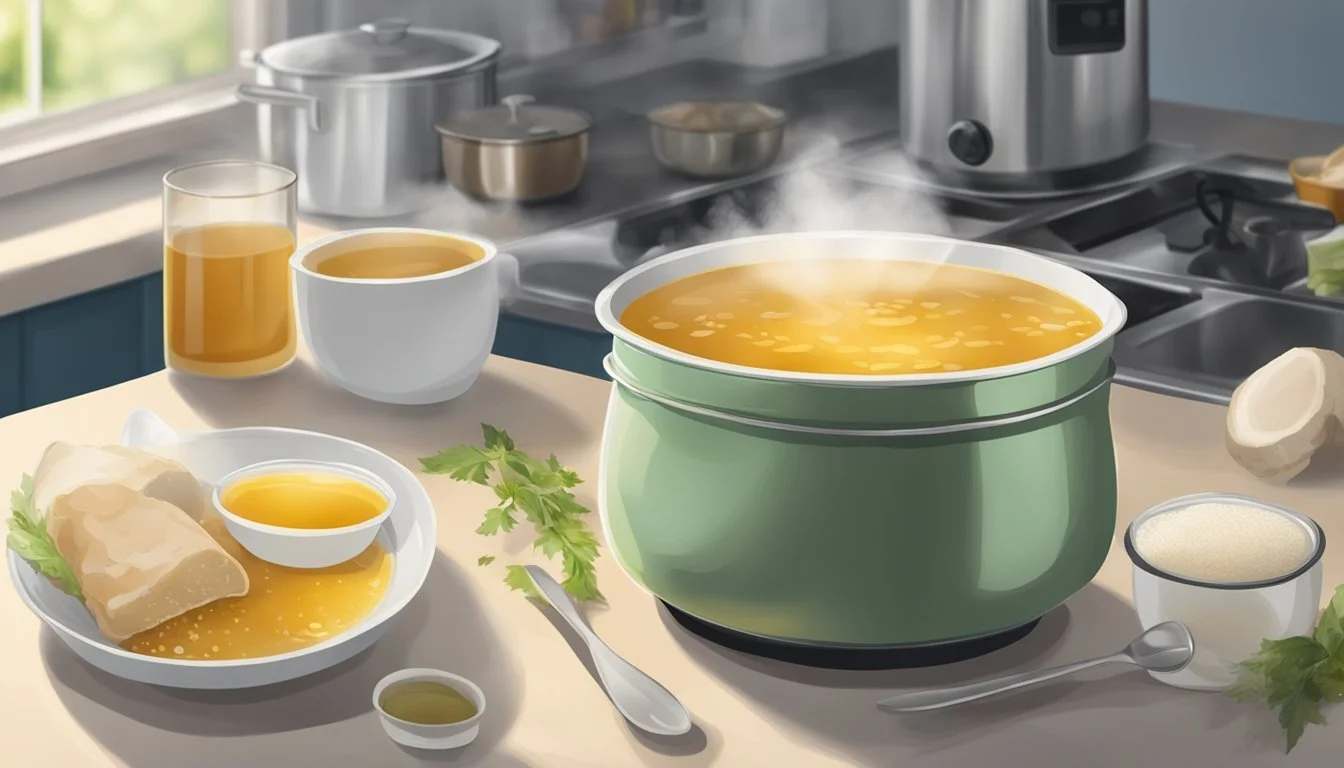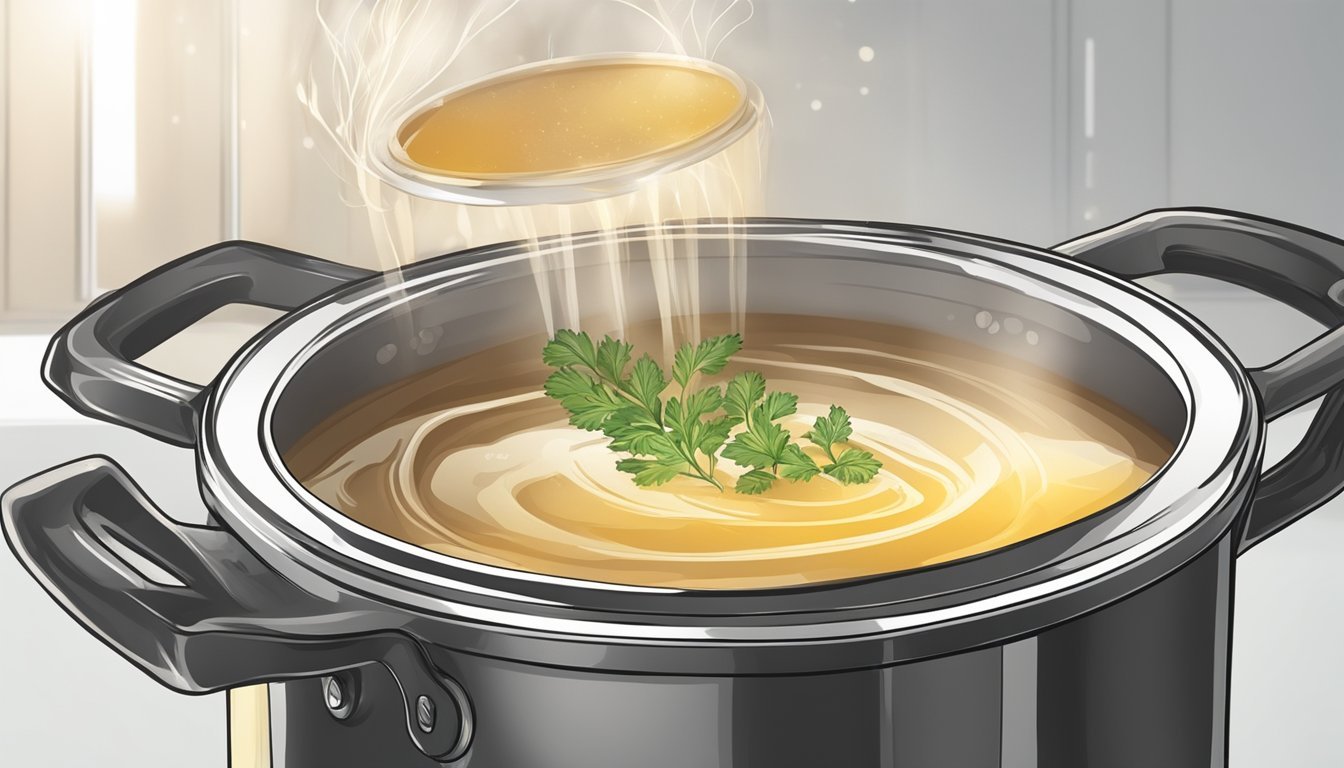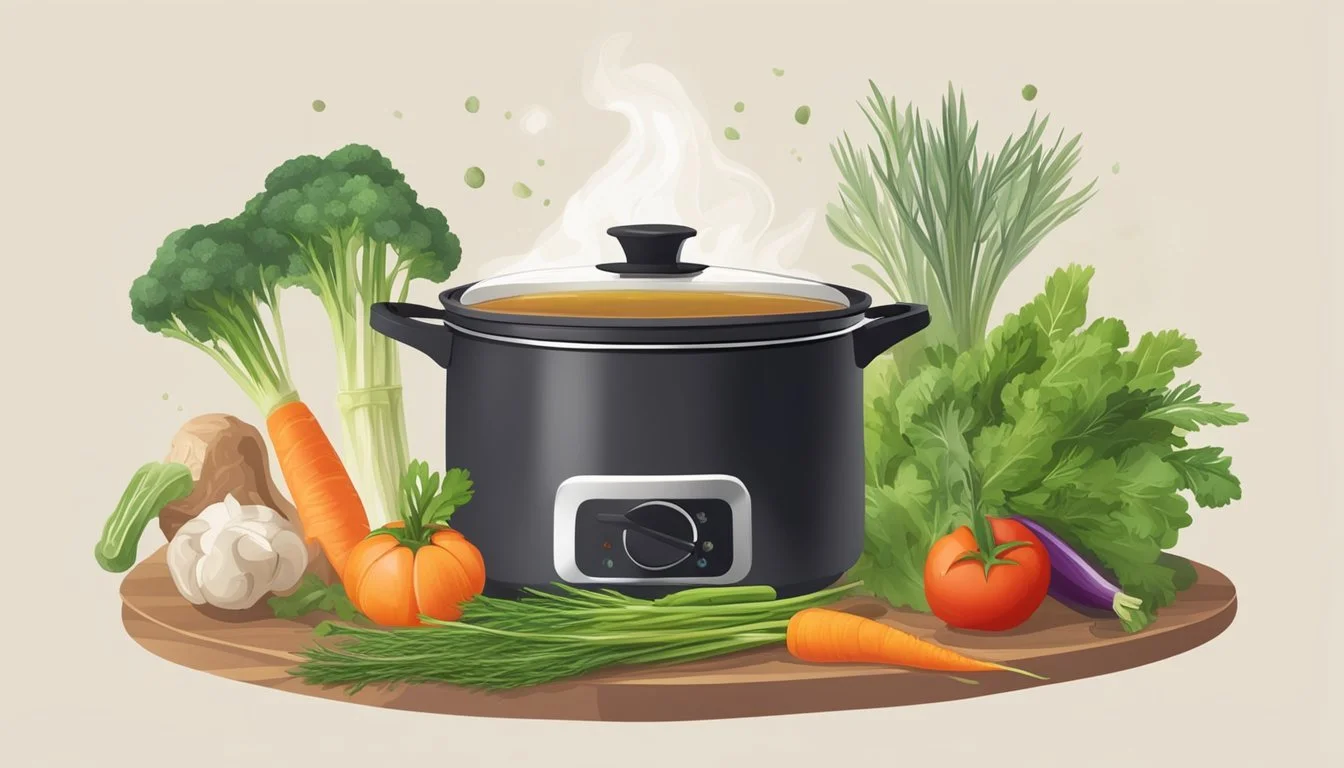Does Bone Broth Spoil? Understanding Shelf Life and Storage
Bone broth, when stored properly, is a nourishing and versatile addition to any kitchen. Its rich flavor and numerous health benefits make it a popular choice for soups, stews, and standalone beverages. But the question on many people's minds is: does bone broth spoil and, if so, how can you tell?
Bone broth can spoil, and understanding its shelf life is crucial for maintaining its quality and nutritional value. Properly stored in the refrigerator, bone broth typically lasts 4-7 days, while unopened commercial versions may last several months. For optimal freshness, use airtight containers and check for any signs of compromised packaging.
Spoiled bone broth can be identified by a sour smell, off taste, or bulging containers. By paying attention to these indicators and storing the broth in a cool, dry place, one can ensure the broth remains safe and beneficial. Ensuring proper storage and timely use extends the life of this nutritious staple in your diet.
Benefits of Bone Broth
Bone broth offers a range of benefits due to its rich nutritional profile.
Nutritious Content
Bone broth is highly nutritious. It is made by simmering animal bones and connective tissue, which release essential nutrients like vitamins, minerals, and amino acids. This nutritious stock provides the body with important compounds necessary for overall health.
Gelatin
The long cooking process breaks down collagen in bones and connective tissues into gelatin. Gelatin is beneficial for joint health and may help reduce inflammation. It's also known to improve skin elasticity.
Gut Health
Bone broth contains amino acids like glutamine, which support gut health. These amino acids help maintain a healthy gut lining and prevent conditions like leaky gut syndrome. The gelatin in bone broth can also aid in digestion.
Immune System Support
The minerals and amino acids in bone broth contribute to a stronger immune system. Nutrients like magnesium, calcium, and phosphorus are essential for immune function. Drinking bone broth may help the body fend off illness more effectively.
Hydration
With its high water content, bone broth helps keep the body hydrated. Hydration is crucial for numerous bodily functions, including temperature regulation and nutrient transportation.
Weight Management
Bone broth is high in protein, which can promote a feeling of fullness. This can be helpful for those looking to manage their weight or reduce overall calorie intake.
Bone broth provides a unique combination of nutrients and benefits that can support various aspects of health in a simple, consumable form.
Understanding Bone Broth Spoilage
Bone broth can spoil, leading to potential health risks. Recognizing spoilage signs and understanding the causes are crucial for ensuring its safety and freshness.
Signs of Bone Broth Spoilage
The first indicator is an unpleasant smell. Fresh bone broth typically has a mild, savory aroma, but spoiled broth may emit a sour or rancid odor.
Appearance is another clue. Spoiled bone broth can develop a cloudiness or show signs of unusual sediment. These visual changes suggest bacterial activity.
Texture and fat accumulation also play roles. While some fat on the surface is normal, a thick, gelatinous layer or an uneven consistency could indicate spoilage.
Taste alterations are significant. Bitter or sour flavors are red flags. Always discard broth that tastes off, even slightly.
Causes of Bone Broth Spoilage
Several factors contribute to bone broth spoilage. Exposure to bacteria is a primary cause. This can happen if the broth is left at room temperature too long, allowing bacterial growth.
Storage conditions are critical. Refrigerated bone broth typically lasts 4-5 days, while freezing extends its lifespan. Always use airtight containers to minimize contamination.
Improper cooling can also lead to spoilage. Rapidly cooling the broth, such as using an ice bath, helps maintain its freshness and reduces bacterial growth.
Regularly check for compromised seals on stored containers, which can allow air and bacteria to enter, accelerating spoilage.
Proper Storage of Bone Broth
To ensure bone broth remains safe and retains its nutritional value, it's crucial to store it correctly. Learn how to refrigerate, freeze, and use airtight containers for the best results.
Refrigerating Bone Broth
When storing bone broth in the refrigerator, it should be kept at a temperature below 40°F (4°C). This helps prevent bacterial growth.
After cooking, cool the broth at room temperature for no more than one hour before refrigerating. This reduces the risk of contamination.
Once refrigerated, bone broth should be used within 3-4 days. If there's any doubt about its freshness, check for any unusual odor or cloudiness.
Freezing Bone Broth
For extended storage, freezing is an excellent option. Before freezing, let the broth cool completely.
Divide the broth into portions using ice cube trays or freezer-safe containers, leaving room for expansion as the liquid freezes.
Label the containers with the date of freezing to track the shelf life. Frozen bone broth can last up to six months without significant loss of quality. Avoid repeated freezing and thawing to maintain flavor and nutritional value.
Airtight Containers and Preservation
Using airtight containers is essential for bone broth storage. Materials like glass jars, plastic containers, and vacuum-sealed bags help protect the broth from contamination and bacteria.
Ensure containers have secure lids and are clean before use. Label each container with the contents and dates to stay organized.
Proper storage extends the broth’s shelf life and maintains its freshness. Whether storing in the refrigerator or freezer, airtight containers are key to keeping bone broth safe and delicious for an extended period.
Utilizing Frozen Bone Broth
Frozen bone broth is a convenient way to have a nutrient-dense ingredient on hand for various recipes. Understanding proper thawing and reheating methods, along with effective cooking applications, ensures the best results.
Thawing and Reheating Frozen Broth
To thaw frozen bone broth safely, transfer it from the freezer to the refrigerator at least 24 hours before use. This gradual thawing process helps maintain its quality. If you need to speed up the process, place the sealed container in a bowl of cold water, changing the water every 30 minutes.
Reheating frozen bone broth is straightforward. Use a pot on the stovetop, heating on low to medium heat until it reaches the desired temperature. Avoid boiling to preserve its nutrients and flavors. For microwave heating, use a microwave-safe container, stirring occasionally to ensure even reheating.
Cooking with Frozen Bone Broth
Frozen bone broth is versatile and can elevate numerous dishes. It serves as a hearty base for soups and stews, adding depth and flavor. When making sauces, bone broth can be reduced to intensify its taste, offering a rich and savory component.
For portion control, freezing bone broth in ice cube trays or small containers allows you to use only what you need. This helps prevent waste and makes it easy to add to recipes without needing to thaw large quantities.
Incorporate frozen bone broth into grains or legumes during cooking to infuse additional nutrients and flavors. Whether used in simple stir-fries or complex dishes, bone broth provides a nutritious and flavorful boost.
Preventing Contaminants in Bone Broth
Avoiding contaminants in bone broth involves minimizing air exposure and maintaining cleanliness during storage. Following these practices ensures the broth remains safe and retains its quality.
Minimizing Air Exposure
Limiting air exposure is essential for preventing the growth of bacteria and mold. Use airtight containers to store the broth.
Consider using container options such as glass jars with tight-sealing lids, plastic containers with secure tops, or freezer-safe bags for long-term storage. Always leave some space at the top to allow for expansion if freezing.
Freezing bone broth in portion-sized amounts in ice cube trays works well. Transfer the frozen cubes to airtight freezer bags to keep them protected.
Label the containers with the date to monitor freshness and use the broth within the recommended timeframe.
Maintaining Cleanliness During Storage
Maintaining cleanliness during storage is critical. Begin by cooling the broth quickly to room temperature before transferring it to the refrigerator or freezer.
Strain the broth to remove any solids, which can harbor bacteria. When handling broth, use clean utensils and thoroughly washed hands to avoid introducing contaminants.
Ensure the storage containers are sterilized or at least well-washed and dried. Never store broth in containers that previously held raw meat without proper cleaning.
Keep the refrigerator at or below 40°F (4°C) for optimal storage, and use the broth within 3-4 days in the fridge. For longer storage, ensure your freezer is set to 0°F (-18°C) or lower.
Nutritional Content and Quality
Bone broth is a nutrient-dense liquid made by simmering bones and connective tissues from various animals. Common types include beef bone broth, chicken broth, pork, and fish.
Homemade bone broth often exhibits a jelly-like consistency when chilled, indicating a high gelatin content from collagen. This gelatin adds a thick and flavorful texture.
Nutrient Profile
A standard cup (240ml) of bone broth typically contains:
10 grams of protein
0.5 grams of fat
0 grams of fiber
0 grams of sugar
200-400 milligrams of sodium
Key Nutrients
Collagen: Supports skin, bone, and joint health.
Amino Acids: Glycine helps reduce inflammation.
Minerals: Rich in calcium, magnesium, and phosphorus, which are crucial for bone density and strength.
Quality Parameters
Usually more flavorful and can be customized with vegetables and herbs.
May have better nutritional quality due to control over ingredients and cooking times.
Often has a jelly-like consistency, indicating high gelatin content.
Store-Bought Bone Broth:
Offers convenience but might contain added preservatives or flavor enhancers.
Nutritional content can vary, and it may have lower gelatin levels compared to the homemade version.
It's essential to check labels for acidity regulators and other additives.
Maximizing Shelf Life of Bone Broth
Proper storage techniques can significantly extend the shelf life of bone broth, ensuring it remains safe and tasty for a longer period. Key strategies include careful labeling and dating of containers, and portioning the broth for incremental use.
Labeling and Dating Containers
Labeling and dating the containers are crucial steps to keep track of your broth's freshness. Using a permanent marker and adhesive labels, mark each container with the date it was prepared. This helps in monitoring expiration dates and ensures old batches do not get mixed with newer ones.
Airtight containers are essential for storing bone broth. They prevent air and contaminants from spoiling the broth. Always make sure to tightly seal the containers after each use. The use of glass jars or BPA-free plastic containers is highly recommended for optimal preservation.
Portioning for Extended Use
Portioning bone broth into smaller amounts before storage can help in extending its use. Instead of storing large quantities together, consider dividing the broth into smaller portions. This reduces the risk of contamination as only what is needed is thawed or reheated.
Ice cube trays are highly effective for this purpose. Pour the broth into the trays and freeze. Once frozen, transfer the cubes to labeled freezer bags. This method makes it easy to use just the right amount as needed since the cubes can be added directly to recipes.
Mason jars also work well for portioning. They can be filled with single-use amounts and stored in the freezer. Whether using ice cube trays or mason jars, portioning helps prevent waste and ensures that the broth remains fresh until its next use.
Incorporating Bone Broth in Cooking
Bone broth serves as a versatile base in soups and stews. Its rich flavor enhances dishes like chicken soup or beef stew, giving them a deeper taste.
Using bone broth in sauces can elevate flavor profiles. Adding it when deglazing a pan picks up browned bits of meat, adding depth to gravy or a reduction sauce.
When simmering bones, seasoning with spices and herbs such as thyme, rosemary, or bay leaves imparts complexity. Incorporating meat scraps adds richness.
A pinch of salt enhances the broth’s natural flavors. However, it's best to season lightly in the beginning and adjust to taste later.
Bone broth can also be used to cook grains or legumes. Replace water with broth for added nutrients and taste when preparing rice or lentils.
Experimenting with different bones, from beef to lamb, reveals varying flavors suitable for diverse dishes.










